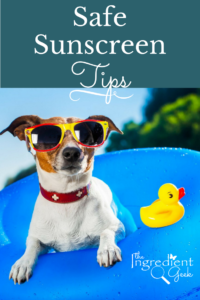 As the weather warms up, more of us remember about putting on sun protection. Of course living in San Diego, we are out in the sun a lot! In the back of my mind I realize that the sun’s rays actually get to me while I’m driving my car every day, but I don’t think about sun protection until I’m going to an event and I know I’ll be outside. I was running out, so I put my *Ingredient Geek* glasses on! I started looking at what ingredients to avoid and what is the safest sunscreen.
As the weather warms up, more of us remember about putting on sun protection. Of course living in San Diego, we are out in the sun a lot! In the back of my mind I realize that the sun’s rays actually get to me while I’m driving my car every day, but I don’t think about sun protection until I’m going to an event and I know I’ll be outside. I was running out, so I put my *Ingredient Geek* glasses on! I started looking at what ingredients to avoid and what is the safest sunscreen.
WHAT TO AVOID
When I first became an Ingredient Geek I was surprised that one of the most popular ingredients in many sunscreens and moisturizers is Retinyl Palmitate. I was SHOCKED to learn that it can act like a sun magnet to draw the sun’s rays to you, and has been linked to skin cancer, accelerating the process (WHAT?!)
Some of the other common ingredients to avoid are:
- Oxybenzone
Oxybenzone is a sunscreen ingredient associated with photo-allergic reactions. This chemical absorbs through the skin in significant amounts. It contaminates the bodies of 97% of Americans according to research by the Centers for Disease Control and Prevention. It’s know for endocrine disruption and persistence and bio-accumulation. It is one of two chemical ingredients banned in Hawaii due to the damage to coral reefs.
- Octinoxate
Octinoxate is shown to have hormone-mimicking effects on laboratory animals. Endocrine disruption, reproductive and developmental toxicity, organ system toxicity. It is the other chemical ingredient that is banned in Hawaii due to the damage to coral reefs.
- Octisalate
Octisalate is suspected to be an environmental toxin. May cause contact dermatitis in sensitive individuals.
- Octocrylene
Octocrylene has high concerns. Biochemical or cellular level changes. Also, this ingredient is suspected or measured to accumulate in people. Suspected to be an environmental toxin. It may cause allergic skin reactions in sensitive individuals.
- Avobenzone
Sunlight can cause avobenzone to break down and lose its effectiveness for skin protection. A recent study found when this chemical comes into contact with sun and chlorine, it can become toxic. (WHAT?!)
I’m also not crazy about nano-particles because I don’t want unknown ingredients & chemicals going all the way into my cells ~ who knows what that will do to me years down the road? The nano-particles are also ending up in our oceans and waterways wreaking havoc on our coral and marine life.
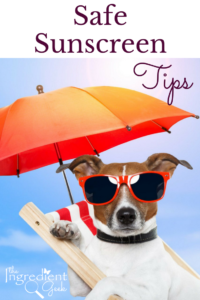
WHAT TO LOOK FOR
The top ingredient I look for is NON-Nano Zinc Oxide. I suggest looking for a Physical Sunscreen rather than a Chemical Sunscreen. Chemical based sunscreens must be absorbed into the skin to be effective via a chemical reaction with the UV rays. Since most have crazy ingredients (as noted above) that often degrade in sunlight and can have lasting ill effects, I don’t recommend them.
Physical sunscreens work by sitting on top of the skin to deflect damaging UV rays. They are kind of like wearing hats and long sleeves to physically block the sun. Zinc Oxide seems to be the safest sun protection available since it protects from the full spectrum of UVA and UVB rays and doesn’t degrade in the sun. If you remember lifeguards with white noses, that’s zinc oxide. The challenge has been that it is difficult to rub in, and no one wants to run around looking like you have white paint all over you.
I posted this on Instagram to show how excited I was that this sunscreen had great ingredients, and did not leave my arm ghostly white!
I’m really enjoying this sunscreen!! It even helps control shine and acts as a make up primer! Save money and benefit your skin and minimize beauty routine! Luv it! So happy! Thx sister! ~ Bryna B.
~~~~~~~~~
My passion is to help families with Swapping Toxins for Healthy Options. I can send you a list of the top ingredients to avoid. Let’s start the conversation about ingredients in products with others ~ Contact me to speak to groups, companies, or a few friends gathered together online or in person. Making small steps CAN make a big impact.
Great articles to learn more:
✔ Kitchen Stewardship
- Natural Sunscreen Review: Over 80 Mineral Sunscreens Tested by One Family!
- Here’s a great quick video from Katie @ Kitchen Stewardship who’s family tested over 80 sunscreens. Her 3rd point was frightening!!
✔ EWG’s Guide to Sunscreens
- The Problem With Vitamin A
- The Trouble With Oxybenzone and Other Sunscreen Chemicals
- Octisalate
- Octocrylene
- Avobenzone
✔ Campaign for Safe Cosmetics
✔ News about the published study of Avobenzone in the Chemosphere Journal
✔ Sunscreens and the Ocean
- Do Sunscreens’ Tiny Particles Harm Ocean Life in Big Ways?
- Sunscreen Pollution
- Sunscreen Could Be Killing the World’s Coral Reefs, Study Says
- Hawaii seeks to ban toxic chemical sunscreens to save the coral reefs from chemical decimation
✔ General Sunscreen Information

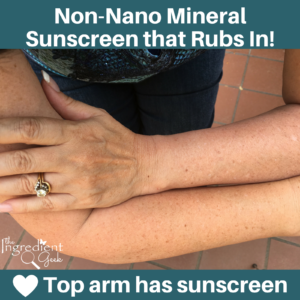

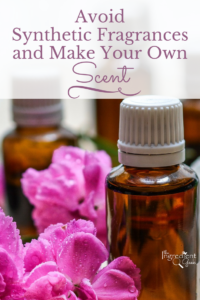 If you’re
If you’re 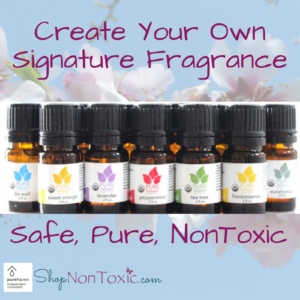

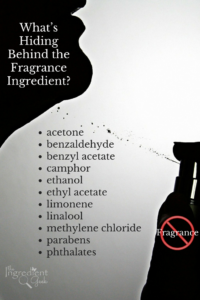 Did you know that the word “fragrance” when used on personal care and home products is not just one ingredient?
Did you know that the word “fragrance” when used on personal care and home products is not just one ingredient?